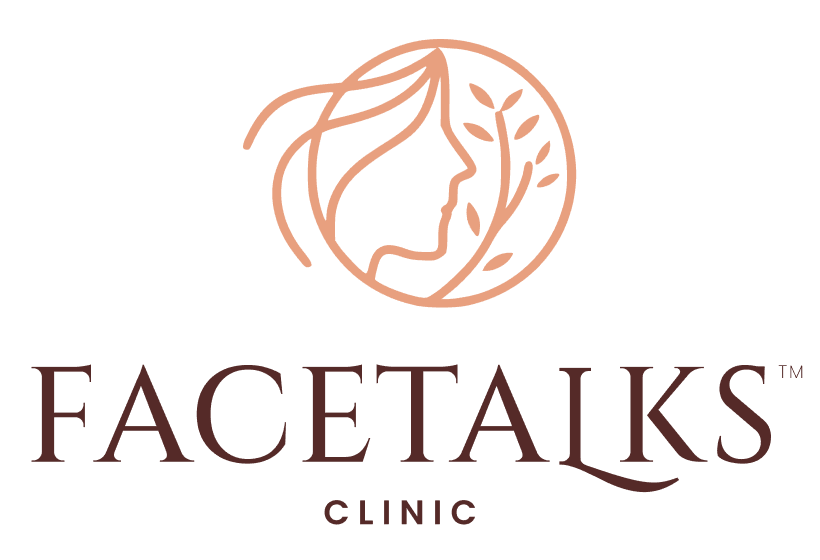Say Goodbye to Tan: Effective Methods for Tan removal from Your Face
Say goodbye to tan and hello to a fresh and glowing complexion! If you’ve spent too much time under the sun or your skin has been subjected to harsh environmental factors, removing tan from your face might seem like a daunting task. But fret not, because we’ve got you covered with effective methods that will help restore your skin’s natural radiance.
Our brand believes in embracing natural beauty and taking care of your skin’s health. That’s why we have curated a list of tried and tested ways to efficiently remove tan from your face. Whether you prefer home remedies or seek professional treatments, we’ve got the solutions that will suit your needs.
From gentle exfoliation techniques and natural ingredient DIY masks to advanced treatments at the dermatologist’s office, you’ll find a variety of options to choose from. We understand the frustrations of dealing with tan lines or uneven skin tone, so we’re here to guide you on your journey towards clear and rejuvenated skin.
Don’t let tan hold you back from feeling confident and radiant. With our effective methods, you can bid farewell to tan and hello to a fresh, glowing face. Get ready to unveil your best self!
Understanding the Causes of Facial Tanning
Facial tanning primarily occurs due to excessive exposure to ultraviolet (UV) rays from the sun. The skin’s natural defense mechanism kicks in when it detects these harmful rays, leading to increased melanin production. Melanin is the pigment responsible for the color of our skin, and its production ramps up as a protective response to shield deeper layers from potential damage. This is why individuals with lighter skin tones often notice tanning more prominently, as their skin produces less melanin to begin with.
Various factors can influence the extent of tanning. For instance, geographical location plays a significant role; areas closer to the equator receive more direct sunlight, increasing the chances of tanning. Additionally, the time of day affects UV exposure levels, with midday sun being the most intense. It’s also important to consider individual lifestyle choices, such as spending prolonged periods outdoors without adequate sun protection, which can exacerbate tanning effects.
Moreover, certain skin types are more susceptible to tanning than others. Those with fair skin, for instance, may find it easier to tan and, conversely, to burn. Other variables like hormonal changes, medications, and even skin conditions can also contribute to uneven tanning. Understanding these causes empowers individuals to take preventive measures and make informed choices regarding sun exposure and skin care.
The Harmful Effects of Excessive Sun Exposure
While a golden tan may seem aesthetically pleasing to many, excessive sun exposure carries significant risks that go far beyond cosmetic concerns. One of the most immediate effects is sunburn, which can cause redness, swelling, and pain. Chronic sunburns can lead to skin damage over time, increasing the risk of developing skin conditions such as hyperpigmentation, where patches of skin become darker due to excessive melanin. This can make it challenging to achieve an even skin tone later on.
Additionally, prolonged exposure to UV rays can accelerate skin aging. The collagen and elastin in the skin, essential for maintaining its elasticity and firmness, can break down prematurely due to UV damage. This leads to wrinkles, fine lines, and a leathery texture, detracting from the youthful appearance of the skin. In fact, studies indicate that up to 90% of visible skin aging is attributable to sun exposure, making it a crucial factor in any anti-aging regimen.
Perhaps the most severe consequence of excessive sun exposure is the increased risk of skin cancer. The World Health Organization classifies UV radiation as a known carcinogen. The skin’s DNA can be damaged by UV rays, leading to mutations that can result in malignant growths. Regularly exposing the skin to sunlight without protection significantly elevates these risks, underscoring the importance of diligent sun protection practices.
Natural Remedies for Removing Tan from Your Face
For those seeking a gentle approach to tan removal, natural remedies can provide effective solutions without the harsh chemicals found in many commercial products. One popular remedy is the use of lemon juice, which contains citric acid known for its natural bleaching properties. Applying diluted lemon juice to the tanned areas can help lighten pigmentation over time. However, caution is advised, as lemon juice can make the skin photosensitive, so it’s best to apply it in the evening and follow up with sunscreen.
Another effective natural remedy is yogurt, particularly when combined with turmeric. Yogurt contains lactic acid, which gently exfoliates the skin and helps to remove dead skin cells, while turmeric has anti-inflammatory and antioxidant properties. Mixing these two ingredients creates a powerful face mask that can not only assist in tan removal but also nourish the skin, leaving it feeling soft and rejuvenated.
Lastly, aloe vera is another excellent option for tan removal. Known for its soothing properties, aloe vera can help to heal the skin while gradually lightening dark areas. Applying fresh aloe vera gel directly onto the face before bedtime can provide moisturizing benefits and promote skin healing, making it a staple in any skincare routine focusing on tan removal.
DIY Face Masks for Tan Removal
Crafting your own face masks at home can be both fun and rewarding, particularly when it comes to tackling tan removal. One effective DIY mask combines gram flour (besan), turmeric, and yogurt. This mixture not only exfoliates but also brightens the skin. To create this mask, mix two tablespoons of gram flour with a pinch of turmeric and enough yogurt to form a paste. Apply it evenly on the face, leave it on for about 30 minutes, and then rinse with lukewarm water for a brighter complexion.
Another simple yet effective mask involves using oatmeal and honey. Oatmeal acts as a natural exfoliant, while honey provides hydration and has antibacterial properties. To make this mask, blend one tablespoon of oatmeal with one tablespoon of honey and a bit of water to achieve a spreadable consistency. Apply the mixture to the tanned areas and let it sit for 20 minutes before rinsing off. Regular use can help in reducing tan while softening the skin.
A third option is a potato and cucumber mask. Both ingredients have natural bleaching properties. To prepare, blend equal parts of potato and cucumber juice, then apply it to the face using a cotton ball. Leave it on for 30 minutes before washing off. This mask can provide refreshing relief to the skin while helping to lighten dark patches effectively. Experimenting with these DIY masks allows individuals to find the perfect natural remedy tailored to their skin’s specific needs.
Skincare Products for Treating Facial Tan
While natural remedies and DIY masks are effective, sometimes it’s beneficial to incorporate specialized skincare products designed for tan removal. Look for products that contain ingredients such as vitamin C, niacinamide, and kojic acid. Vitamin C is known for its brightening properties, helping to reduce pigmentation and enhance overall skin tone. Serums infused with vitamin C can be powerful allies in the fight against tanning.
Niacinamide, also known as vitamin B3, is another ingredient to consider. It helps strengthen the skin’s barrier, improve texture, and reduce the appearance of dark spots. Many skincare brands offer niacinamide-rich creams and serums that can be easily incorporated into your daily routine, providing both immediate and long-term benefits in the quest for an even complexion.
Kojic acid is a lesser-known yet effective ingredient that inhibits melanin production, making it a popular choice for treating hyperpigmentation. Many over-the-counter creams and serums contain kojic acid, offering a targeted solution for tan removal. Always remember to patch-test new products before applying them to the entire face, and consult with a dermatologist for personalized recommendations based on your skin type and concerns.
Professional Treatments for Removing Tan from Your Face
For those seeking quicker results or more severe cases of tanning, professional treatments can provide significant benefits. Chemical peels, for instance, involve applying a solution to the skin that exfoliates the outer layers, revealing fresh skin underneath. This treatment can help reduce the appearance of tan while improving overall skin texture. Various types of chemical peels are available, and the choice should be tailored to individual skin concerns, making consultations with a dermatologist essential.
Another promising option is laser therapy, which targets melanin in the skin. This advanced treatment uses focused light beams to break down pigment and promote skin rejuvenation. Laser treatments can be particularly effective for deep-set tans and hyperpigmentation. However, they often require multiple sessions and should only be performed by qualified professionals to ensure safety and efficacy.
Microdermabrasion is also a popular treatment for removing tan. This procedure involves exfoliating the skin using fine crystals, allowing for the removal of dead skin cells and promoting cell turnover. The result is a brighter, more even complexion. Like other treatments, microdermabrasion should be conducted by a trained professional to achieve the best results while minimizing risks.
Preventing Future Tan and Maintaining a Healthy Complexion
Prevention is always better than cure when it comes to facial tanning. One of the most effective ways to protect your skin from UV rays is consistent use of sunscreen, regardless of the weather. Look for a broad-spectrum sunscreen with an SPF of 30 or higher and apply it generously to all exposed areas of the face, even on cloudy days. Reapplication every two hours, especially during prolonged outdoor activities, is essential in maintaining protection.
Additionally, wearing protective clothing can significantly reduce sun exposure. Lightweight, long-sleeved shirts, wide-brimmed hats, and sunglasses can create a physical barrier against harmful UV rays. Seeking shade during peak sun hours, typically between 10 AM and 4 PM, can also help minimize tanning. Planning outdoor activities outside these hours can be a simple yet effective strategy for preventing tan.
Finally, incorporating antioxidant-rich foods into your diet can bolster your skin’s defenses against sun damage. Foods high in vitamin C, E, and beta-carotene can enhance skin health from within. Fresh fruits and vegetables, nuts, and seeds contribute essential nutrients that help repair skin and maintain a healthy, glowing complexion. Regularly hydrating and maintaining a balanced diet is just as crucial in the fight against tanning as topical applications.
Lifestyle Changes to Protect Your Face from Tanning
Adopting certain lifestyle changes can significantly reduce the risk of facial tanning. One of the simplest yet most effective changes is to modify outdoor habits. Instead of basking in the sun, consider engaging in outdoor activities in the early morning or late afternoon when UV rays are less intense. This not only reduces tanning but also allows for a more comfortable experience during warmer months.
Incorporating a dedicated skincare routine is vital. This includes regular cleansing, exfoliating, and moisturizing to maintain skin health. Using products with antioxidants can help mitigate damage caused by environmental factors, including sun exposure. Furthermore, understanding your skin type is essential when selecting products; this ensures that you’re using the most suitable options for your unique needs.
Lastly, consider stress management techniques like yoga or meditation. Stress can negatively impact skin health, leading to conditions that may worsen the appearance of tanning or pigmentation. Prioritizing mental health alongside physical well-being can contribute to a holistic approach towards achieving and maintaining a radiant complexion.
Common Myths About Tan Removal Debunked
When it comes to tan removal, misinformation can lead to ineffective practices and disappointment. One common myth is that using harsh scrubs will eliminate tan quickly. While exfoliation is essential for removing dead skin cells, overly aggressive scrubbing can damage the skin barrier, leading to irritation and inflammation. Gentle exfoliation is key to achieving results without harming the skin.
Another prevalent misconception is that all tanning products are harmful. Many individuals believe that any product claiming to lighten skin will lead to adverse effects. However, there are numerous safe and effective formulations available that can help manage pigmentation. It’s crucial to read labels and choose products with proven ingredients while avoiding those containing harmful chemicals like hydroquinone or mercury.
Finally, some people assume that once they’ve tanned, it’s irreversible. While it may feel that way, consistent skincare practices, natural remedies, and professional treatments can effectively reduce tan and restore the skin’s natural tone. Understanding that tan removal is a gradual process can help set realistic expectations and encourage individuals to stick with their skincare routines.
Conclusion: Embrace Your Natural Complexion
In conclusion, understanding the causes and effects of facial tanning is essential for effective treatment and prevention. With a variety of options, from natural remedies and DIY masks to professional treatments and lifestyle changes, achieving a clear and glowing complexion is within reach. It’s important to remember that every individual’s skin is unique, and finding the right combination of methods may take time and experimentation.
Moreover, embracing your natural complexion is empowering. Society often places undue pressure on individuals to conform to certain beauty standards, but the truth is that healthy skin comes in all shades and tones. By prioritizing skin health and protection, you can confidently showcase your natural beauty while feeling radiant and self-assured.
Ultimately, the journey towards skin health is not just about removing tan; it’s about nurturing your skin and fostering a positive relationship with it. Celebrate your uniqueness, practice self-care, and remember that taking care of your skin is a lifelong commitment that pays off in radiant, healthy skin. Embrace your natural complexion and let your inner glow shine through!



